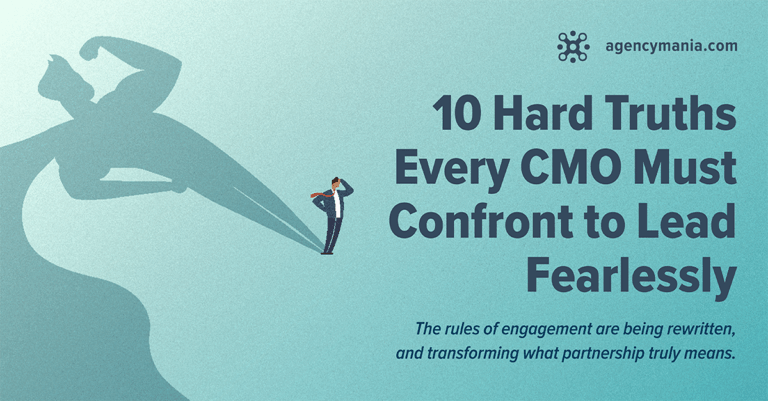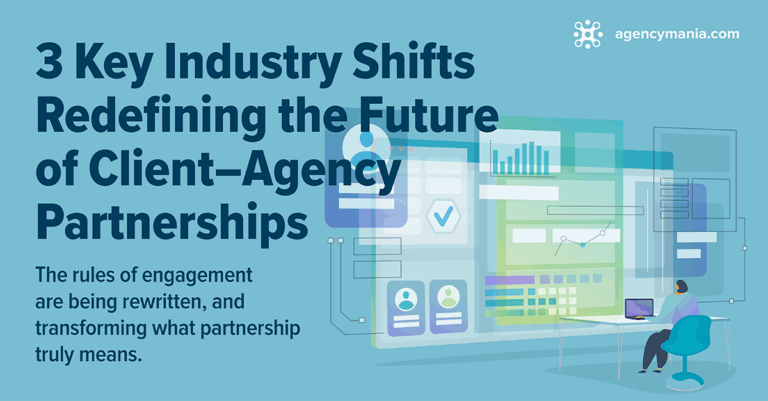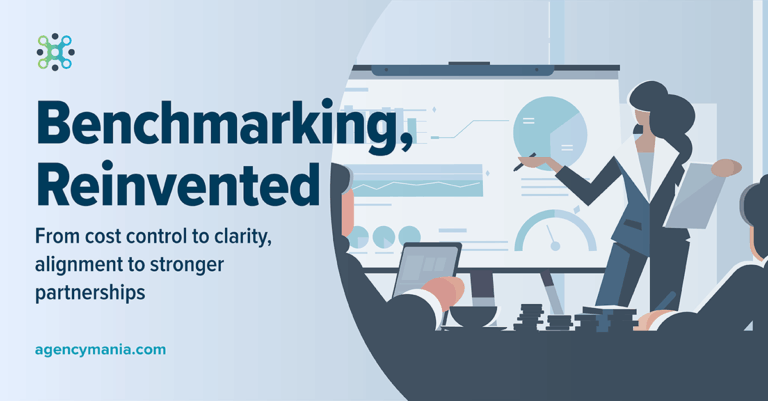Download a print-friendly version here
If Only I Knew
How often have you told yourself, “If only I knew! I would have taken immediate action to address the issue”? Have you ever found yourself in the uncomfortable situation of participating in an annual performance review and being told about improvement areas that were, until that troubled day, unknown to you? Hopefully not too often. But on these few occasions, if you had known about it prior, you would have taken immediate action, course-corrected and improved performance instead of looking like a deer caught in headlights.
Let’s face it. Annual reviews with a mid-year check-in are quite common in employee reviews as well as client/agency partnership evaluations. This is the de facto standard for the responsible management and ongoing optimization of a company’s most valuable resources — whether those are are internal or external. Most large brand advertisers understand the strategic importance of providing and receiving feedback. They conduct a comprehensive 360-degree review of their relationships with their agencies, highlighting key strengths and weaknesses, and coming up with action plans. They often conduct a mid-year check-in to get a pulse on how things are progressing before year end. If the performance of the agency is tied to compensation, as it is often the case, then the desire of getting an early read is more than justifiable, wouldn’t you say? But the real question is this: is it enough? Who can truly afford to wait six months to know that things are going well? What impact did the last few projects have on the overall annual scores provided? Sure, there is always the possibility of providing and receiving informal feedback during the course of the year. But left to an opportunistic window, the chances are pretty lean that a dialog between clients and agencies will take place in a productive manner, if at all. This is what motivated innovative companies like Accenture to revisit their employee evaluation process to focus on ongoing, real-time feedback to equip their employees with information that makes a difference and builds trust. So, now what? How can we implement real-time feedback in client/agency performance evaluations and deliver a more robust solution?
Real-time feedback needed
In his speech at the Transformation conference, Global Brand Officer Marc Pritchard of packaged good giant Procter & Gamble (P&G) invited the agency audience to “renew the partnership.” Renewing the client/agency partnership requires, to Mr. Pritchard, “raising the bar on our media and creative partnership.” He added, “Our worst habit is not talking straight. A Creative Director once told me that ‘P&G polities you to death.’” Having frank conversations is far easier when the feedback is taking place shortly after whatever situation occurred. As time goes on, details get blurry and much gets lost. P&G, the largest advertiser in the world, is one of many considering a different, more actionable approach. Mr. Pritchard finished by mentioning: “So we’re revamping evaluations with more real-time feedback, and moving to an objective third-party assessment of creative quality and business results.” Amen. How can companies like P&G operationalize real-time feedback and deliver on the vision shared by his leadership?
Trigger-based project evaluations
One of the most obvious solutions to providing and receiving real-time feedback to/from agency partners is to trigger a short-form evaluation survey following the completion of a project. Given the higher frequency of these surveys, the questions are naturally fewer than the more comprehensive and much-needed annual evaluation survey, which is more focused on the relationship and the overall client/agency engagement than any given assignment.
In project level surveys, the feedback is specifically focused on that execution, and only individuals on the agency and on the client side involved with this project are invited to participate. The five-to-six-question survey allows the project lead to capture enough information to circle back with the agency and provide praises or recommendations that will lead, if agreement is reached, to immediate course-correction. The chances for similar issues to occur again at the next project are greatly reduced and in the end, everyone benefits. Relationships and actual work quality improve daily.
Example of project pulse survey to client team members.
Trending and the integration of various data points
The feedback is captured within a short window of time after the project has been finished and the survey participants have provided their feedback. Over time, as projects get completed with a given agency, a picture starts slowly forming of the overall performance and satisfaction with the work produced. As a trend emerges, the overall aggregate view can then be compared and contrasted to the mid-year and annual evaluations.
To illustrate this point, here is an example of a report showing side by side the annual evaluation results, and the aggregate project-level results, allowing a richer analysis of the performance of that agency and how it addressed feedback over time. Is the agency taking input productively and improving over time? Is the work suffering and the relationship deteriorating to the point of no return? Is the client willing to act on areas where it can drive improvements in the agency’s ability to executive effectively?
Relationships are dynamic in nature, and feedback should be too. Don’t wait until it’s too late to take corrective actions. When clients and agencies both commit to receiving and providing real-time feedback after a project is completed, the work immediately improves and the relationship strengthens over time. The chances for success are much greater. Only then can you finally say “I am glad I knew,” as everyone on the client and agency sides now had an opportunity to give their absolute best and make effective use of the feedback provided.
Download a print-friendly version here










